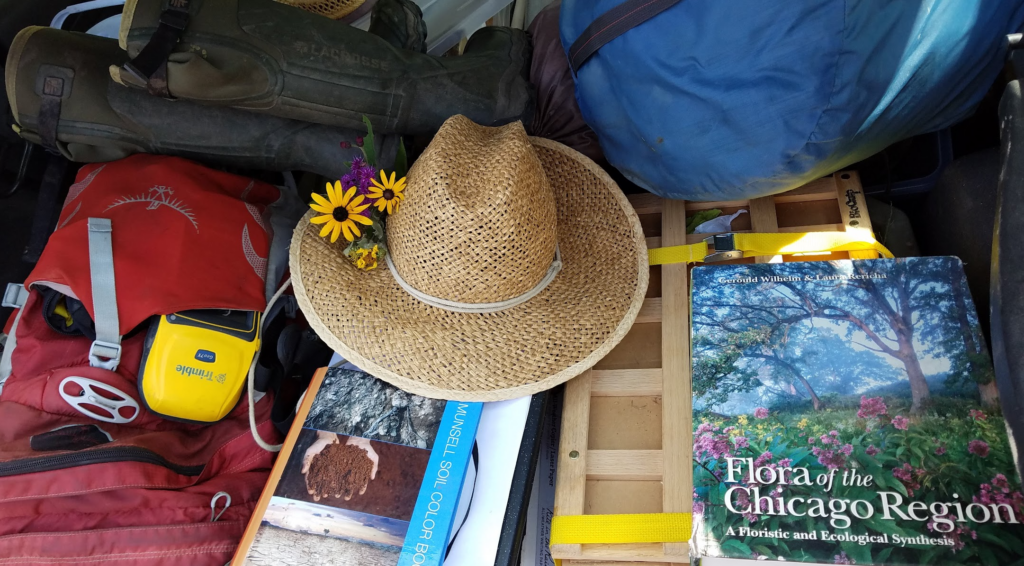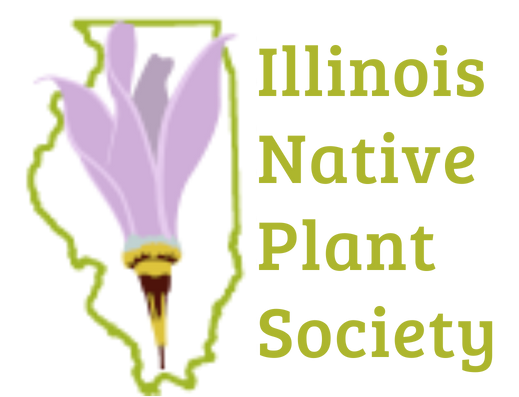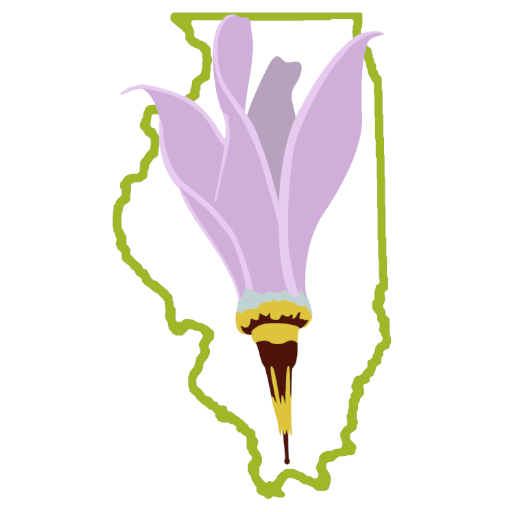Flora of the Chicago Region Giveaway
Northeast Chapter: Home | Events | Resources | Newsletters


In 2022, the Northeast Chapter of the Illinois Native Plant Society is awarding six (6) twelve (12) copies of the book Flora of the Chicago Region to budding botanists, naturalists, habitat restoration volunteers, or students of ecology or conservation-related programs to encourage their personal and/or professional development. A primary goal of this initiative is to reduce the cost barrier to learning about local plants, as, at $125, the Flora can be cost-prohibitive for many people to purchase on their own.
Although we planned to award six books, we received over 70 entries with an astounding number of worthy nominations. As such, we doubled the number of books awarded to twelve, and we hope to continue this initiative in the future.
This effort was made possible in 2022 through a grant from the Paul and Dottie Foundation of DuPage Foundation and the Indiana Academy of Sciences. Members of the Northeast Chapter Board evaluated the entries and awarded copies of the Flora based on nominees’ need and passion for learning about the native flora and natural communities of Illinois.
2022 Recipients
Imeña Valdes is completing her masters in Plant Conservation and Biology at Northwestern University and the Chicago Botanic Garden. She borrowed a copy of the Flora as an intern at the Field Museum in order to work on a table of Chicago garden plants and the insects they support. Her nominator Erika Hasle wrote, “She will be a force for good in our conservation work.”
Kate Slattery wrote, “With this on my bookshelf, I could spend more time looking up plants as needed as opposed to taking a note, going to the herbarium reference library, looking it up, and taking a photo with my phone for later reference. My career goal is not yet focused. I would like to work in restoration or research and am enjoying access to the book at the herbarium. We are very fortunate to have such an epic work devoted to our region.”
Rory Schiafo is a PhD student in Plant Biology and Conservation at Northwestern University and the Chicago Botanic Garden. She is studying how plant communities respond to restoration and management practices. Rory wrote, “Access to this flora would allow me to advance my skills as a botanist…to help advance our understanding of how to manage, restore, and conserve our native ecosystems.”
Evan Randall is a gardener and ecosystem restoration volunteer in the Forest Preserves of Cook County. He leads native plant and pollinator education at his community garden in Chicago’s Woodlawn neighborhood. In the summer he uses native flowers to teach about “native insect diversity and reduce stigma towards maligned groups like wasps.” At Sundown Meadow, he plans to use the Flora to further increase volunteers’ collective knowledge of the local flora and fauna that they are working to restore and conserve.
Vlad Nevirkovets is an undergraduate student studying environmental sciences at Northwestern University where he began a native plant restoration area at the student garden. He is also a frequent habitat restoration volunteer in the Forest Preserves of Cook County. Vlad shared, “I greatly appreciate the INPS’s generosity in making this book available to those who cannot afford it, and I hope that receiving this book will be an instrumental step in my development as a nature lover, ecologist, and conservation activist.”
Lauren MacLean worked as an intern on the Morton Arboretum’s Experimental Prairie in 2021. Her nominator Emma Leavens wrote, “She learned the species of the prairie quickly and developed a particular interest in sedges which I suspect is one of the truest signs of a plant enthusiast. She identified several insect species that the rest of the team hadn’t even noticed and shared with us what she learned in her free time about their ecology. I hope for her to have a copy of Flora of the Chicago Region because I know that she will use it wisely in the natural areas of our region but also because that book would offer her an incredible resource for looking at plants in their communities with other plants and with insects.”
Sadie Hennen leads an all-women’s conservation crew through the Student Conservation Association on the southeast side of Chicago. She has kept a copy of the Flora of the Chicago Region checked out from the library. She wrote, “One of my goals is to learn more about plants and ecosystem niches and I know this is the prime book to make that happen for this time in my life.”
Alyssa Grelecki is a botanist and ecological restoration practitioner; her work includes vegetation surveys, seed collecting, planting, and invasive species management. In her nomination she shared, “Growing up in the Chicago region I always had an interest in plants and once I got a position that allowed me to study and key out plants I found the Flora. I’ve only used borrowed copies and it would be amazing to have my own copy! The book has been on my wish list for many years.”
Matt Finzel is a master’s student and field botanist with the Illinois Natural History Survey where he conducts plant surveys across Illinois. When he first encountered the Flora as an intern with the McHenry County Conservation District, he was “captivated by what seemed to be limitless knowledge at my fingertips”. He wrote, “I would be immensely grateful to be able to have this book on my desk and shelf, then being awarded the freedom to write notes in the margins and tricks for remembering certain traits. It would more than definitely get its fair share of use and love from me.” Matt was also nominated by Suneeti Jog: “He is hard working and passionate about field botany and truly deserves his own copy of this book. I can attest his work ethic and productivity, and know of few others who will use this superb key more than Matt.”
Grant Fessler currently works for the Plants of Concern community science program at the Chicago Botanic Garden, conducting rare plant monitoring in Chicago Region natural areas. He wrote, “Outside of work I spend lots of my free time learning as many plants as I can. Having a copy of this book would greatly aid me in my personal botanical education. It would be well-loved and often used.”
Norbaya Durr is a 2022 graduate of Elmhurst University where she majored in Biology and English and minored in Chemistry. She has been working on the Morton Arboretum’s Experimental Prairie since 2020 and is conducting her own research project there in 2022. According to her nominator Emma Leavens, Norbaya’s “curiosity and fascination are both boundless and wildly infectious … She has a very interdisciplinary perspective and manages to intertwine her learning in sciences with questions about how to most effectively advocate for the environment. With her careful reading and study of writing, she is poised to be an exceptional science communicator.”
Mayank Aggarwal worked as an intern at the Experimental Prairie at the Morton Arboretum. His nominator Emma Leavens shared, “He is an incredibly enthusiastic and equally capable learner. He took to plant identification much faster than most and proved to have a very keen eye for botanical observation. At one point last season, a volunteer loaned him a copy of Flora of the Chicago Region for a weekend. He read as much of it as he could in that time which demonstrated a clear love of the material and hunger to take in as much as he had access to. He was, of course, disappointed to have to return it the following Monday.” Next he’ll be studying environmental engineering and plans to continue to be involved in ecological research and restoration.
About the Flora of the Chicago Region
The Flora of the Chicago Region (2017), written by Gerould Wilhelm and Laura Rericha with illustrations by Margot Mazur, documents and details nearly 3,200 plant species and their associated organisms found in the 22-county Chicago region, including parts of Wisconsin, Illinois, Indiana, and Michigan.
Weighing in at 10.5 pounds, its 1392 pages, 1517 illustrations, 3150 dot maps, keys, 47 full pages of color photos, 4 indices, glossary, nomenclatural authorities, literature cited, and plant-animal interactions and insights provide the student and expert not only keys to identification, but a lifetime of additional information to study and explore.
The Flora of the Chicago Region retails for $125 and is available for purchase from the Indiana Academy of Sciences.
Nomination Guidelines:
- Nominating yourself is encouraged! You can also nominate someone else.
- Nominee’s primary residence must be within the Chicago Region – see map above and county list: Illinois (Boone, Cook, DeKalb, DuPage, Grundy, Kane, Kankakee, Kendall, Lake, McHenry, Will), Indiana (Jasper, Lake, LaPorte, Newton, Porter, St. Joseph, Starke), Michigan (Berrien), Wisconsin (Kenosha, Racine, Walworth).
- Nominee should not already have a copy of the Flora of the Chicago Region and should demonstrate how they need/will benefit from receiving a complimentary copy.
- Nominations are due May 31st, 2022 (at midnight Central time).
Nominations are closed.
This effort is made possible through a grant from the Paul and Dottie Foundation of DuPage Foundation, Indiana Academy of Sciences, and private donations. If you would like to contribute to programs and efforts that further our chapter’s mission, donations can be made via PayPal here.
Questions about this initiative may be directed to northeast.inps@gmail.com.






